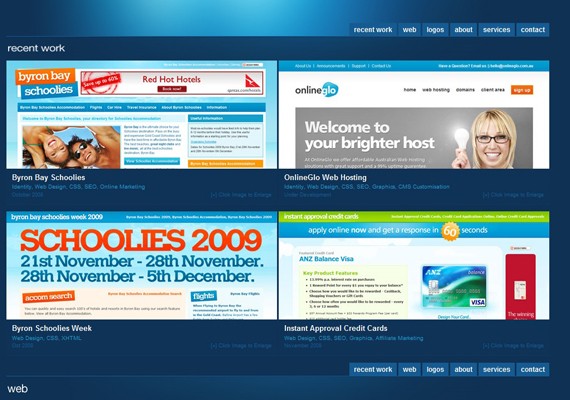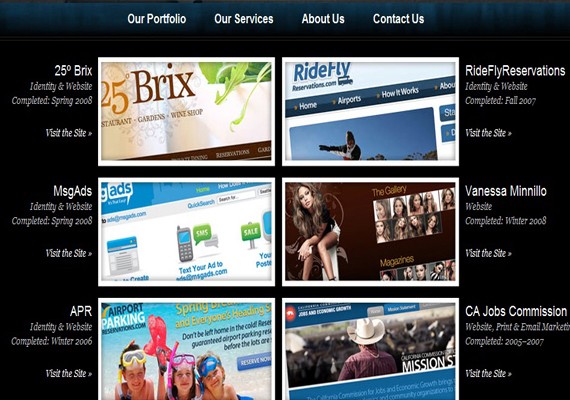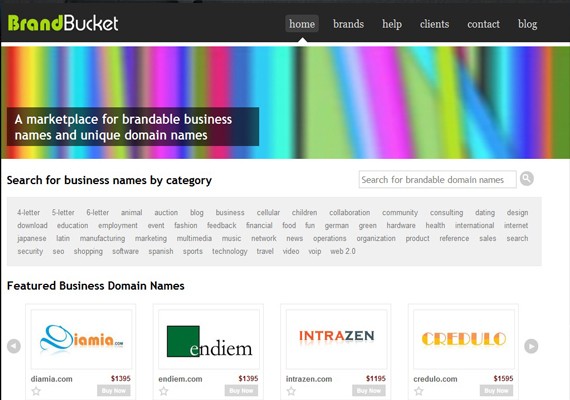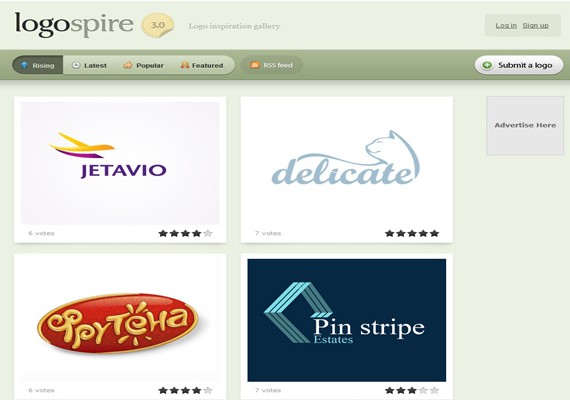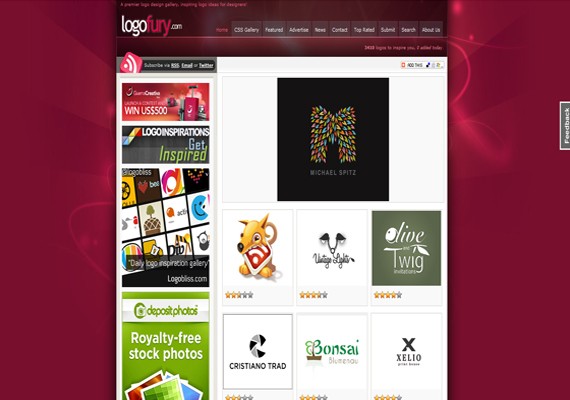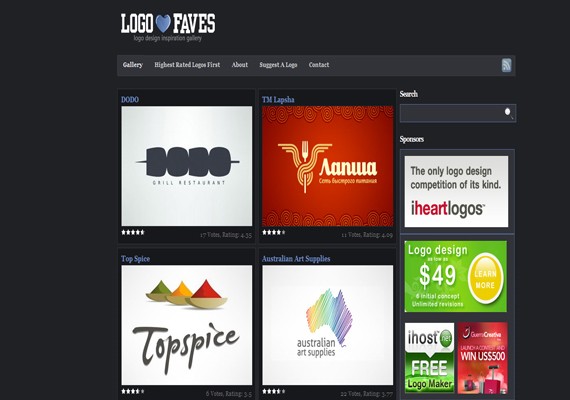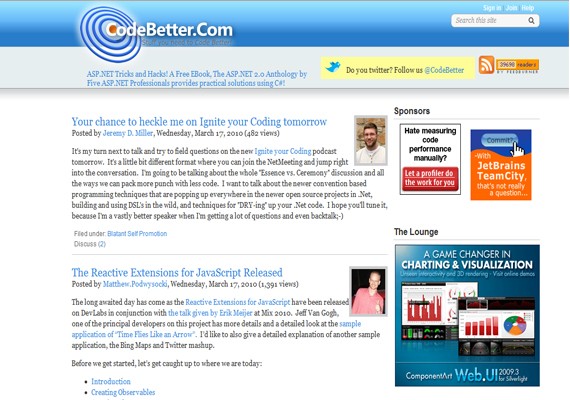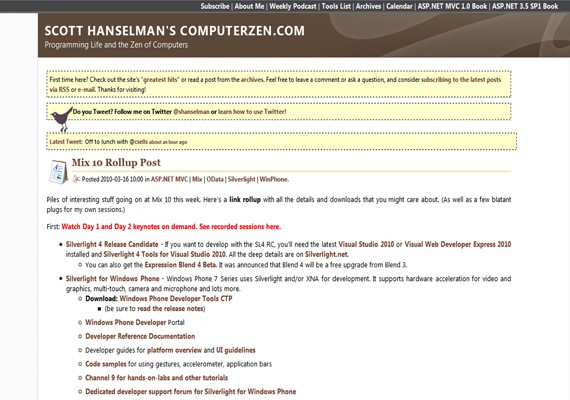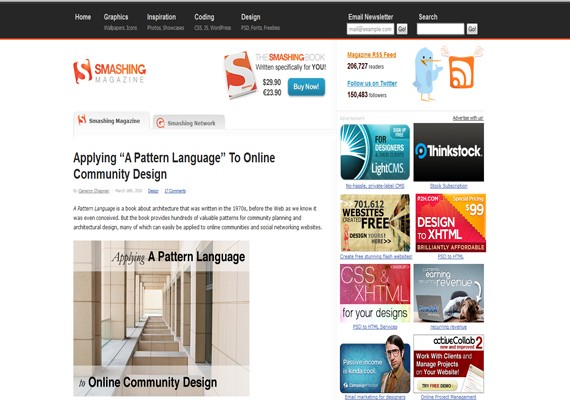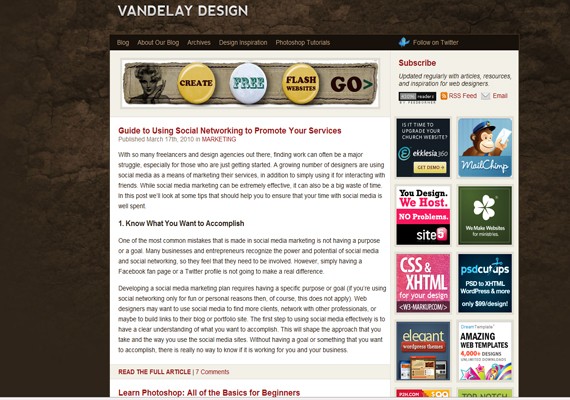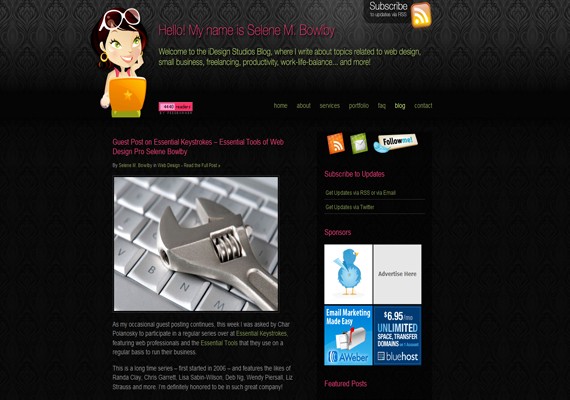There are literally hundreds of reasons why you should become a freelance web designer, and three of the best reasons are financial freedom, creative freedom, and you can work just about anywhere you want to.
But let me tell you why it’s a bad idea.
You probably have hundreds of reasons to hate your current job.
Maybe you call in sick occasionally because you just need that extra day off more than you need the money they pay you.
Or perhaps you’ve been delaying that request from a friend from two weeks ago?
Simple reasons, big consequences.
However, if you will still want to become a freelancer, you will find some great tips and ideas what to do, to become better and find more clients. Just look at the table of contents.
The Freelance Designer Toolbox
Unlimited Downloads: 500,000+ Web Templates, Icon Sets, Themes & Design Assets
All starting at only $16.50 per month
Table of Contents:
- 10 Reasons Why You Shouldn’t Become a Freelancer
- Common Health Problems of Freelance Designers and How to Deal With Them
- Pros and Cons of Freelancing: A Passion or a Profession?
- 10 Things to Consider Before Starting a Freelancing Career
- 10 Ways to Become a More Productive Freelancer
- How to Become a Valuable Web Designer
- Best Business Tips on How to Become a Great Web Designer
- How to Travel the World as a Freelance Web Designer or Web Developer
10 Reasons Why You Shouldn’t Become a Freelancer In 2016
I can cite 100 reasons why you shouldn’t become a freelance web designer, but no one would actually read that list, right? So, here are the top reasons why you shouldn’t be a freelance web designer. For now, at least!
Your goal is to answer NO!
1. You are indecisive most of the time.
An office mate once asked you to take the lead on the company party, set it all up and bring it to life, and you managed to pause for over a minute without talking, when you should have simply said “Let me think about it”, “Yes” or “No” depending on how you felt at that moment. Or maybe there was a time when you didn’t ask for a colleague’s help simply because you were shy?
Remember, if you can’t decide instantly, always say you’ll think about it and don’t pause or stare blankly at the person you’re talking to.
Now, why is this grounds for you not to become a freelance web designer?
When web designers work with clients, it’s all about how smooth communication goes for every aspect of the business. From proposing a design, down to signing of contracts or wrapping things up. A moment of hesitation can make or break your credibility, because clients want service providers who are very sure about what they’re doing.
There are a lot of “what should we do here” and “what do you think is best” questions when it comes to web design, and often you’ll need to answer almost instantly because time is of the essence. If it takes you several minutes to think of a solution, or solutions, you’ll have a hard time keeping your clients.
2. You are quick to decide on things.
Contrary to the point above, being too quick to make decision can hurt your career as well. I’m talking mostly about saying yes to every request, accepting every revision request, and basically being a slave to your client’s wishes.
You should learn to say no, or at least hold off on your decision and ask for some time to think about it.
If you are quick to agree or disagree on things, you’ll find yourself either flooded with tasks to do or with clients that leave you after one project.
Solution to 1 and 2
The best move? Think ahead. Learn from your past conversations with clients or employer, read online about what questions to expect, try to peek into the future as much as possible so that you will not be as surprised.
And when it’s totally something new to you, you can always ask for time to think about it. Much safer that way, right?
3. You think it’s easy money.
No, just no. Freelancing is not easy money, nor is it as advertised, “be your own boss”. You know what makes it harder for freelance web designers? It’s not just about satisfying prospective clients with their designs, it’s also about how they market themselves, how they manage their financials, how they outplay several thousands of active competitors, and how they make people want to get them to design for them no matter what the cost.
It’s not easy money, it’s even harder than your current job.
With your current office job you’re not actively searching for clients. Your employer also makes sure you pay enough taxes, and most likely you don’t work over 50-70 hours a week with just one full-time job.
That is totally different from freelancing, especially for freelance web designers who have to always be in the “mood” to be creative or even more challenging, putting out client fires.
To give you an idea, this is the whole process of a friend of mine when it comes to his clients:
- Talk about the requirements, colors, width, and other stuff.
- Send several wireframes/sketches (in my experience with him he sent me five different designs) and ask client to choose.
- Once client chooses, he starts designing in Photoshop based on the wireframe chosen.
- If client says he has the freedom to choose his own colors, he presents his design in different colors.
- Once every aspect of the design has been agreed on, that’s when the HTML/CSS conversion happens.
Mind you, this conversation happens between two people, no supervisor or manager in between. And the conversation and delivery happens in a matter of hours or less than a week from start to finish depending on how big the project is.
And that is just one aspect of it. Discussions about pricing, contract, and other non-design related stuff comes as well.
Decide, is it easy money? If you enter freelancing with that thought, you’ll be caught unawares and you’ll fail miserably hard.
4. You don’t have at least 5 web design projects you can be proud of.
I know that starting out as a web designer is already hard, but you can’t really hope to be successful if you don’t have at least five great web designs in your portfolio. It doesn’t matter if they are made from your previous job or just for the sole purpose of populating your portfolio, what matters is they can get people’s attention.
They will also serve as a testament that you’re great with what you do. You don’t buy from an online seller without good reviews, right? It works pretty much the same with web design. Clients look for people who can handle their web projects, not people who can promise great designs.
Show them what you can do!
If you have been delaying on building that dream portfolio of yours, you should altogether quit the idea of becoming a freelance web designer.
Solution:
Build your own portfolio site NOW. – easiest and fastest way to get your site live is just customising some cool WordPress theme. If you think thats not what designers should do..and that every designer should spend months instead of creating custom design – you are wrong. Move fast and no excuses!
Build your portfolio right now and start populating it with your great designs.
Do it now and you won’t regret it!
5. You have lots of bills and no savings.
Dipping yourself into the world of freelancing is a great risk. Without the proper skills, tools, and guidance you won’t probably get any client at all for months. That is why you shouldn’t even think about freelancing if you still have financial responsibilities and you’re exhausting your monthly paycheque because of those.
If you are properly connected with the right people, you can maybe pull it off. But it’s a great risk as well, since the flow of clients isn’t always on.
Let’s say you already have the skills, the portfolio, and everything is basically in place, except for clients. Do you have a plan to find people who are looking for a web designer? It’s not everyday that people want to have a website designed, and that’s the problem.
Good thing there are many ways web designers can combat this dead end, and one of the best is by converting clients into passive income sources. We will this on 1WD in detail at a later date, so be sure to sign up to our newsletter or follow us on Facebook or Twitter for updates.
Anyway, entering the world of freelancing is a great risk. Trust me when I say don’t do it if you don’t have enough cash in your bank to live at least three months without any income.
Relevant titles:
- 4 Money Saving Tips
- 4 Tips to Retire Like Warren Buffet
6. You think web design means only Photoshop
If you define web design as simply designing a web template using Photoshop, then you should reconsider your title, that’s just called graphic design (to stretch the term).
Being a web designer means three things:
- You are good at converting concepts to reality through Photoshop (or other image editing tools).
- You are good with converting the image file to a working HTML/CSS website.
- You will most likely think of becoming a web developer as well.
Okay, let’s talk about 2 and 3.
If you’re thinking of entering the world of freelance web design, you should have decent skills with HTML and CSS because this is the current standard. If you are new to this as well, I highly suggest that you start mastering them now.
A lot of web designers are limiting themselves because they only focus on Photoshop, HTML, and CSS, and can’t add functionality because they can’t code, something that will make their careers in freelancing a better experience. This is optional, of course, but if you are thinking of becoming a web developer as well, you have a bright future ahead of you.
7. You hate revisions
You thought that being a freelancer means no boss, right? Unfortunately, that’s totally off the mark. Someone pays you to do work for them, and they’re the boss. In every web design job no one ever satisfies any client on the first design. There will always be revisions, several of them.
Let me tell you this: clients love revisions. They feel like they’re in control, like they know what they are doing. Do you have to comply? Well, if it’s against your better judgement then talk them out of it, but if you can’t, well, they’re paying!
8. You don’t like talking to people
Being a freelance web designer is different than being a freelance writer and web developer in many senses. Freelance web developers and writers operate in a more systematic manner, while freelance web designers don’t, they operate 50% objectively and 50% subjectively.
It doesn’t go this way:
- Client sends his requirements
- You work on it
- You submit it
- Client approves or ask for revision
Reality is harder:
- Client sends his requirements
- You discuss it with said client
- You work on it
- You submit it
- Client asks for revision
- You work on it
- Client asks for another revision
- You work on it
- Client decides on a different route
- You get tired of his farce
- But you still work on it because you have already started
- You suck it up and finish the project until your client is satisfied.
This is reality. It’s full of talking, negotiating, and contemplating suicide at every revision.
9. You’re not committed to excellence
If you can’t blow your clients away with your design, they probably won’t leave great testimonials for your service. Big clients actually look for testimonials from previous clients. Without them, you probably won’t land a big project.
Committing yourself to excellence is one way of defining yourself as a web designer. Your work should reflect your personality, so if your work is excellent and you have fantastic testimonials, new clients will assume that you’re worth working with.
If you are used to saying, “I guess it’s already okay” or “that’s good enough” then freelance web design is not for you.
Web design is art, and everything you do is a masterpiece. If you have just-okay pieces, what can people expect from you?
10. You didn’t read everything on my list
If you didn’t read every single word of this post, you are:
- indecisive – you opened this page to read, not to just scan and go.
- not willing to learn – well, duh?
- not committed to excellence – reading this post will only take 10 minutes of your time, tops.
- thinking that freelancing is easy – you think you know everything about freelancing?
If you are seriously thinking about becoming a freelance web designer, and if you are here to learn just that, then why did you skip to the end?
If you’re one of the few who actually read and pondered these points, great! That’s the perfect attitude!
Question: Do you still want to be a freelancer?
If your answer to every item here is NO then by all means start freelancing ASAP!
But if you answered YES at least once then you should fix that problem before doing anything else! I do believe if you read this article, you are committed to becoming a freelance web designer though! The next step for you then is to start acquiring some business skills as well as web design knowledge.
If I may suggest – you should join our mailing list below, our email course is really created for you.
We have interviewed and learned from the best freelance designers in the market and have brought all the best tips back to you..!
If you don’t want to wait however, we have created an awesome eBook for you to get start ASAP!
It’s called Never Run Out Of Projects Starting Today – and it’s only $9!
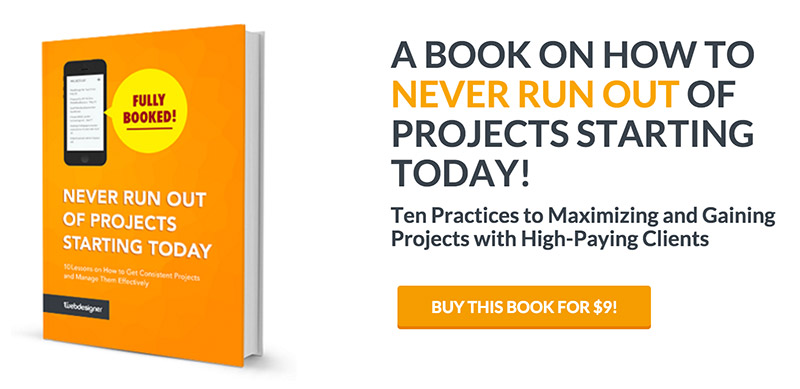
With this book you are seen above, we have already shown our intention of the path this article is going to take. However first let’s us make you aware of some health hazards of freelancing.
Common Health Problems of Freelance Designers and How to Deal With Them
Being a freelance designer has its own pros and cons.The most obvious disadvantage is that you won’t be getting outside enough or enough Vitamin D. Since you work long, irregular hours and spend too much time in front of the computer, you are more prone to certain health problems than the rest of the population. Here are the most common health problems that designers suffer–and what you should do to treat them.
Tension Headache

Tension headaches are a common health problem suffered by many people, not just designers. Tension headaches affect more than 78% of the population. Common causes of this health problem are staying in one position doing the same thing such as using a computer. Other common causes include stress, fatigue, eye strain, anxiety and physical inactivity. Notice that most causes are how you often describe a typical designer’s job: hours of work in front of the computer and non-stop pressure. If the headache bothers you for longer than two weeks, you may have developed a chronic tension headache. If it occurs on an occasional basis, it may be an episodic tension headache.
Tension headaches are often hard to read and thus often neglected and difficult to treat. For starters, an obvious symptom is if there is a tightness on the neck and scalp muscles. You may have pain in the head, scalp and neck area–like a tight band has been placed across your head. Often, the pain starts at the back of the head and spreads forward.
There’s not much to fear, though. Although tension headaches can get painful, these are rarely a symptom of a more serious illness. You only need a few changes in your diet and lifestyle will reduce any more tension headaches in the future. Of course if the headaches become more frequent, it may be an indication of a severe medical problem like a brain tumor or aneurysm. See a doctor for further evaluation.
Dealing with Tension Headache:
Once again, tension headaches don’t normally require a visit to the doctor, as they normally go away after a few hours. Here are a few natural ways to remedy the problem:
- Sleep it off. Once in the zone, designers will often forget to eat, sleep and relax. They will stare at the computer for several hours, in order to finish their project as soon as they can. This can lead to a severe headache, the best way to remedy this is to just lie down, close your eyes and take a power nap. The sooner you take a rest, the sooner the headache will go away.
- Avoid staring at the computer screen (or the sun, or other sources of light)– this can lead to a migraine, blurred vision and nausea. To reduce chances of getting a headache, wear tinted glasses. Minimize the brightness of the monitor and avoid using the computer in a darkened room.
- Give up smoking and avoid drinking. These activities can can make your headaches worse and happen more frequently. Alcoholic drinks with large amounts of tyramine can cause headaches, as well.
- Have an active lifestyle–exercise regularly and have a healthy diet.
- Use a cold compress, this is effective and can alleviate the pain in 20 minutes or less for most people.
- Reduce caffeine intake. While coffee wakes you up in the morning, it can also cause muscle tension, anxiety and insomnia that can trigger a tension headache.
Chronic Fatigue

by Eleanor Hardwick
Fatigue is the state of feeling tired and weary that stretches from a day to a few months. Fatigue can be acute or chronic. Being a graphic or web designer entails long and irregular work hours. High pressure jobs are more prone to fatigue, and this means us designers as well. Work-related factors such as long hours of work, strenuous mental or physical activity are leading causes for fatigue.
Symptoms include sleepiness (accidentally sleeping against your will), tiredness throughout the day, irritability, depression, giddiness, etc. Fatigue generally affects your overall work performance and productivity because your decision making, communication and planning skills are reduced. There is an inability to recall instructions and details. Creativity is killed by fatigue. There is reduced reaction time–similar to what you feel when drunk.
Dealing with Fatigue:
- The most obvious way to deal with fatigue is to get the proper amount of sleep. Get at least 7 to 8 hours of sleep a day! This is to ensure that you are well rested at night; and up and about in the morning.
- Change your work environment. There are several environmental factors that can actually increase fatigue. This includes dim lighting, hot temperatures, noisy settings and tasks that are boring and repetitive. Work in a place where you can be more alert, efficient and productive.
Computer Eye Strain

Photo by James Gordon
Designers are especially prone to computer eye strain; Spending most of their work hours in front of the computer. Prolonged use of the PC can lead to eye strain, migraines, blurred vision and other visual problems. It can even put you at risk of glaucoma.
Symptoms of computer eye strain include: headache during or after computer use, dry eyes, slow focusing when looking at near and far objects, blurred vision and doubling of vision. This may be coupled with neck and back pain and pain in the wrists and shoulders while working on the PC.
Dealing with Eye Strain
- Don’t forget to blink every once in a while ;). We designers sometimes tend to forget that our human eyes need to blink, especially when staring into the computer screen. Forgetting to blink can lead to dry eyes.
- When working, give your eyes time to rest. For every 30 minutes or so, stop staring at the computer screen and close your eyes or look somewhere else. For a focusing exercise, focus on an object at least 10 feet away.
- Work in a properly lit workspace. Place your lamp behind you, and not with the light facing you. Adjust your monitor screen’s Brightness and Contrast settings to help ease strain on the eyes.
Stress-related Insomnia

Photo by Ilse
Stress is a common enemy for designers. Some react to it in a good way, some in bad, others in worse. Stress comes when there are major life changes in work, home or relationships. Tremendous amounts of stress can keep you awake at night, triggering stress-related insomnia.
Obviously, if you have insomnia, you have difficulty sleeping. Other symptoms of stress-related insomnia include change in your sleeping pattern or body clock; a nagging headache, stiff neck or back ache; rapid breathing, fatigue, irritability and sweaty palms.
Because sleep is so vital for one’s overall health, insomnia can greatly affect your work ethic and productivity. You become more hot-headed, mentally slower, less productive and tired throughout the day.
Dealing with Insomnia:
- PMR or Progressive Muscle Relaxation. Stress causes our body muscles to tense up, so PMR is a great tool to destress and relax your body.
- Find a hobby to destress! Go biking, do yoga, paint or try journaling. These activities can improve your overall health and stress management. It clears one’s mind from toxic and negative feelings that may have been causing you to lose your zzzz’s.
- If your insomnia has been going on for several months you should seek medical help. Insomnia can be healed through proper medication and therapy.
- Improve ‘sleep hygiene’ to get a better amount of sleep. Sleep and wake up at the same time everyday. Exercise regularly. Do as much as to avoid coffee, smoking or alcohol, most specially before bedtime. The bedroom should only be used for sleeping, and not for a place for office work or for reading.
Neck and Shoulder Pain

Neck and Shoulder pain is a result from sitting in the same position when working, and it’s especially associated with anyone who works with computers. This can lead to bad posture, as well as pain in the back, chest, arms, hips, thighs and legs. Neck and shoulder pain can increase fatigue and tensed muscles, eventually leading to more serious problems like major tissue injury, spinal joint dysfunction, etc.
Dealing with Neck and Shoulder Pain
- A three minute break every thirty minutes will work wonders. Stand up, stretch your shoulders and neck, and breathe deeply.
- Get an ergonomic chair. The chair must be adjusted according to your height so that your back rest supports your torso’s weight, thighs parallel to the ground and feet firmly on the ground.
- Alternate use of hands. You don’t have to be ambidextrous, but try switching work from one hand to another to balance the load. Most often than not, shoulder and neck pain happens on one side than the other only.
- Use your forearm rest. This can greatly reduce the load of your shoulders by supporting the weight of your forearms while using the computer.
- Seek medical attention for recurring or worsening neck and shoulder back pains.
Caffeine Addiction

If after waking up in the morning, your first thought is “Must.Have.Coffee”, you’re a coffee addict. You put your java to brew before you brush your teeth and it isn’t before your second mug kicks in that you feel able to function normally. And God forbid if for some reason you don’t get your caffeine intake, all hell might break lose!
Working/Sleeping late

A lot of freelancers are night owls. This might not necessarily be because they function better at night. There’s a good chance that this habit formed from working late into the night trying to meet deadlines.
Working late to meet a deadline is fine once in a while but when it becomes the norm you’ve got a problem.
Solution: Set your deadline a day before the actual one. That way, if some work is still left over, you’ll have one more day to work on it.
Smoking

Smoking is bad for your health. It’s a universal fact. Freelancers who smoke tend to do it more while working. Hey, there’s no office policy here to adhere to! As you keep working, you work through your pack of cigarettes too and before you know it, your ashtray is full and your pack is empty and you’re still craving a cig!
Excessive smoking brings all kinds of health problems with it – both short and long term. I won’t tell you to quit, but I will tell you to smoke less.
Solution: Make your home office a smoke free zone. Throw away your ash trays, and remove every pack of cigarettes from there. If you want to smoke, make it a point to step out of your work space.
If you’re in the middle of something and concentrating hard at work, chances are you’ll keep delaying going out for a smoke. Before you know it, a project is wrapped up and you haven’t smoked in 3 hours!
Carpel Tunnel Syndrome

Carpal Tunnel Syndrome is a very real threat for freelancers and a lot of us have been through it. It’s caused by repetitive actions and CTS can affect our fingers, wrists and hands. Consider this: We’re at our computers for hours at a time, typing. We hit the backspace or delete key countless times, click countless time, and our fingers are poised in one position continuously as we use the mouse.
At its worst, CTS requires surgery to be corrected and has a 6 week recovery period. Can you imagine not working for that long? Who will pay the bills?!
If we don’t take preventive measures, we’re putting ourselves at a higher risk for Carpal Tunnel Syndrome.
Solution: Exercise your hands after every hour or so. Stretch your arms, flex your fingers and rotate your wrists. Keep a massage ball or a similar hand exercise item at your desk and use it whenever you’re thinking or brain storming.
Short Attention Span
This I’ll blame on the internet. In order to work, we need to stay connected 24/7. With email, RSS readers, twitter etc we’ve managed to reduce our attention span drastically. We keep getting distracted by one thing or the other. If it’s not email, then it’s twitter and if it’s not twitter it’s going through our favourite blogs and commenting.
Before long, our day is over and we didn’t get much work done. The deadline is a day closer too!
Solution: Prioritize. If you need to work, close off everything else. Close your inbox, twitter, and any websites you always keep open.
Divide your work in stages and give yourself breaks when you complete that stage. Check your mail, tweet, facebook or read your favourite blogs then. It’s tough in the beginning, but it’s doable and yields great results!
Bad posture
After being hunched over your computer for hours daily, your posture is bound to suffer.
Solution: To avoid looking like a hunched up old person, invest in a good ergonomic chair. It’ll be expensive but it’ll serve you well for years to come. And if you can afford it, get an ergonomic desk too.
Big bum

Get up and check. You have a big bum don’t you? Unless they exercise vigilantly, freelancers tend to gain weight.
Solution: Get off your behind and start exercising. Nothing strenuous, just a few stretches and a walk or a jog is enough to get you back on the road to getting and staying fit.
As a freelancer, I’ve faced all these hazards except Carpal Tunnel. While I’ve corrected some, I still struggle with others. Now let’s look at some pros and cons of freelancing.
Pros and Cons of Freelancing: A Passion or a Profession?
First of all we need to know what a freelancer is and what “freelancing” means? A freelancer is usually a self-employed person who works as a web designer, developer, content writer or even a blogger. More precisely, he contracts a small/medium (rarely large) task from various clients and receives money when the work is done. This means that, as a freelancer you can work at home while staying in your bed, anytime and keeping your own schedule.
Most of my friends, as do most people, are of the opinion that freelancing is the common, easiest choice of the lazy. “Call me when you have some money and then say you have a job…” is the most common expression I’ve heard in my career as a freelancer.
As a freelancer, you need one or more clients, the work should be perfect to impress future clients, you work on your schedule but the task you have has a deadline, which in most cases is yesterday. In conclusion freelancing is a job, a serious way of making money, but you are the boss and you work according to your own schedule.
Let’s take a look at the pros and cons of being a freelancer.
Pros:
- Work at Home
- Organizing your own schedule
- A lot of opportunities on the web
- You can’t be fired or laid off anymore
Cons:
- You will become “tired and bored” of your home
- Your schedule is never the same with the clients deadline
- Clients can always choose another freelancer
- No tasks is equivalent to no money
Want to Become a Freelancer? Necessary Steps:
1. Portfolio
From where I stand, freelancing implies 99% ambition + work (or maybe work + ambition) and 1% talent (I’ve learned it from Thomas Edison). Working as a freelancer involves being a professional in a particular domain (no matter which one) and the ability to work hard. To my shame, I do not have a whole lot of experience, but in my short career I’ve worked really long hours daily. One way to learn is using tutorials, but nothing is possible without conscientious work and a lot of time spent in front of your computer as to become competitive.
All your work (which will be called “portfolio” from now on) should be good and eye-catching to entice possible customers. Taking all these things into consideration, what’s required: a personal site, blog or any promo & ads and an impressive portfolio. This is such an important aspect because it represents you, it shows all your real abilities. Many freelancers can say that they make a new YouTube like project faster and better, but their portfolio can let potential customers know if this it is true or not (if he/she has worked on similar or more difficult projects than the one the clients wants, that should mean that the freelancer is able to do the job). In my personal opinion a portfolio is like a TV commercial: it can either be a launching ramp or just your ordinary unappealing add.
Below are some awesome portfolios to inspire you.
1- Branded07 Portfolio
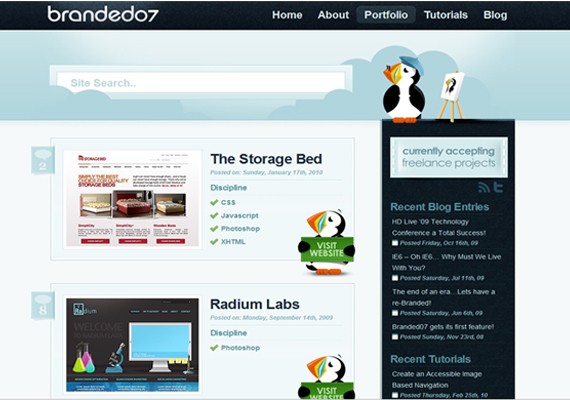
2- Clear Media Portfolio
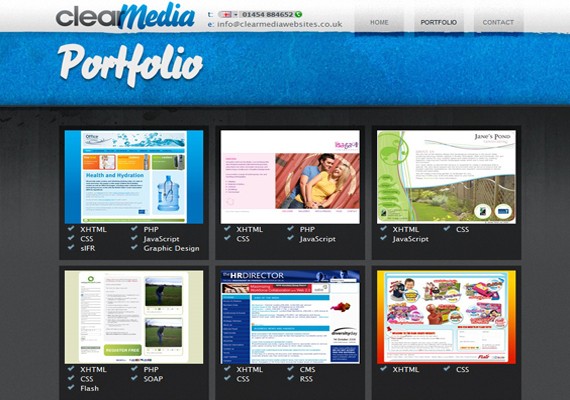
3- Jamison Banham’s Portfolio
4- Bain Bridge Studios Portfolio
5- Ploc Media Portfolio
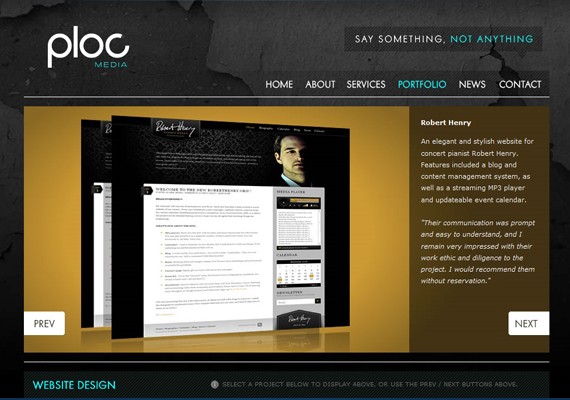
What should I do, until reaching the highest level? (Suppose hard work…)
2. How to be the best!
I am afraid to say that the answer is still work, but not unproductive one. Each time you give the best in your work, try to forward it or ask people what do they think about your work, and if they like it, post it on a website in the field you work. Anyway a pro in domain has a different eye as your friends which in most cases are uninterested in what you have done. To know where you are and to know your true abilities try showing your work on the www. There are a lot of ways to publish your work. In the majority of these places somebody (who is a pro or maybe master) will leave you a comment probably like these:”Nicely done”, “Good work”, “You should try again”, “What is that?”. In case you are a logo designer, then Logopond is the best place (my opinion) where you can post your logos. Here are some other sites where you are advised by the best logo designers in the world:
1- Brand Bucket
2- Logospire
3- Logofury
4- Logofaves
5- Creattica
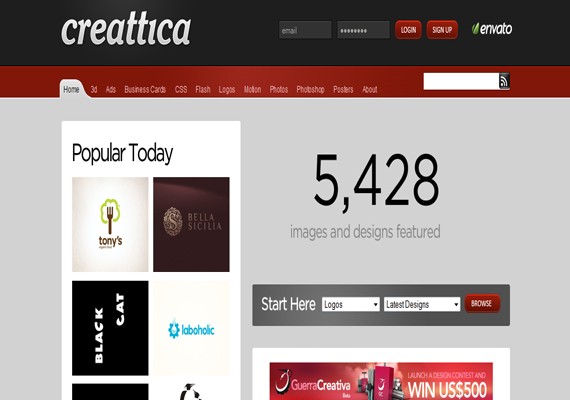
6- Logomoose

I have also found a few which offer important suggestions for developers on the web:
1- Codebetter
2- Scott Hanselman
3- Web-development-blog
4- Leigeber
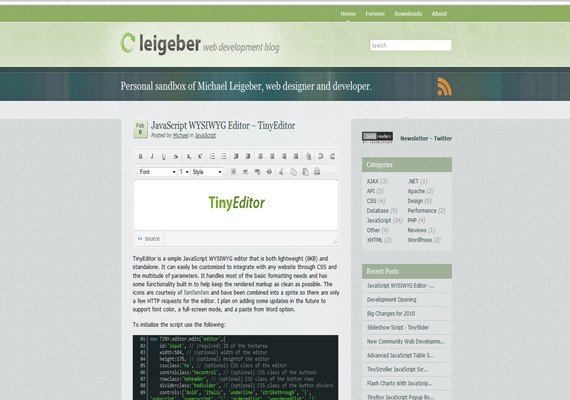
Great sources for web designers:
1- Smashingmagazine
2- Vandelaydesign
3- Idesignstudios
4- Webdesign-tutorials
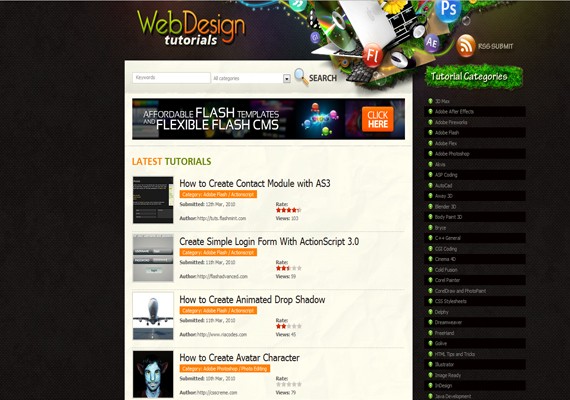
3.How to make money?
As I said previously, you “don’t work in vain”. Even if you are a beginner, try to compete with the best to achieve hard standards because World Wide Web (WWW) is a market for freelancers, an important and an exponentially growing one. Below are some places where you can find jobs as a freelancer:
1- Rent-a-coder

On this website, prices are low even though www.rent-a-coder.com is a sounding name. “RAC” is the best opportunity to gain experience because there are many projects from various domains such as logo design, web design, content writing, development, translating, but also MATLAB and Excel algorithms. What you have to know is that getting the first project, may be difficult as you have no feed-back, which is a really important criteria for any customer. Another advantage here is that you can bid as much as you want.
2- 99designs
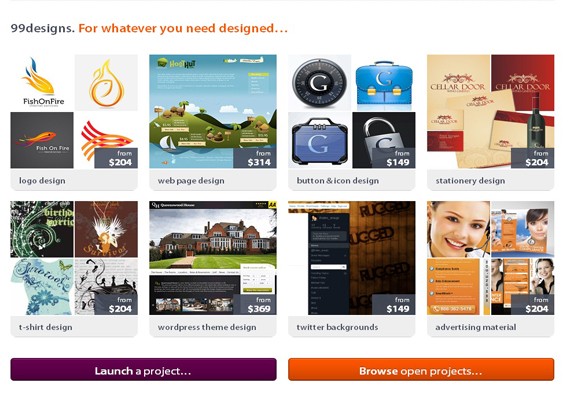
www.99designs.com is intended only for designers, but this is where the crème of logo & web design. Prices start from 150 $ (the cheapest product ever met here) to 350 $(a web page design is 300-350$ or more and the average logo 200-300$) which means a perfect income for beginners because there is no need to have a portfolio or previous work. You simply submit a “.jpeg” picture of your design and the contest arbiter gives you ratings staring from 1 to 5. After many failed projects on what will be a very important day of your life you will win a project; then you send the *.psd/*.ai format to the client and your account will be “full” of money.
3- Elance – (Merged with oDesk)
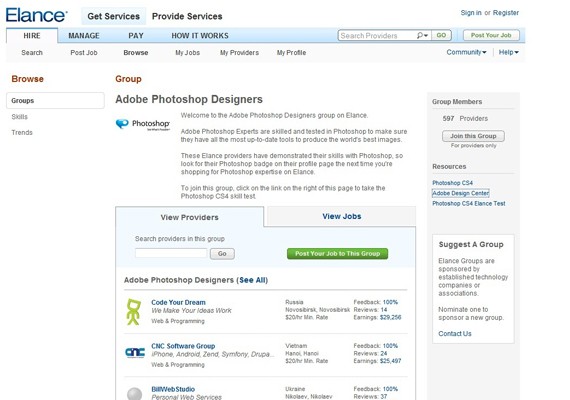
In order to work on this website, it is required to pass an easy exam which consists in few questions about how to pay a freelancer, to receive money or any other frequent problems. You can also post your portfolio, without forgetting that experience and feed-back are as important as I said before.
Surely you can find on the Internet other very good places where to find jobs as a freelancer, I selected only three which I tried personally. I am working on a list of all the online marketplaces for freelancers, and I hope to post it soon.
In conclusion, nothing is possible if you don’t put all your will behind your work and that’s why I have a precious piece of advice: go to work and do your best!
You are still here, right? Okay, then we are going to continue with some great tips before you start freelancing.
10 Things to Consider Before Starting a Freelancing Career
There are a lot of great reasons why one would want to venture into freelancing, all of which have been talked to death, but there are also those that should make one take a second guess.
1. Are You a Self Starter?

Merely thinking about becoming a freelancer implies that getting things going for yourself, and manifesting that go getter attitude, is not an issue. In fact, it’s one of your strong traits. Without this, there isn’t a really good chance of surviving as a freelancer for more then a month at the most.
2. Can You Handle Rejection?

The word that should be synonymous with freelancing is rejection, because around 70% of the time that’s what you’ll be hearing. As a freelancer first starting out, unless you’ve been building your reputation before jumping in, there is going to be a lot of time spent on job boards and other job listing sites looking for work.
The replies heard back from those leads will more than likely be rejection, its just the way the biz is. There can be a number of reasons, but whatever it may be, it’s still rejection. It doesn’t go away, just changes as you get more experienced. So being able to deal with this, and use it as a type of motivation of sorts, is vital!
3. Do You Fear Failure?
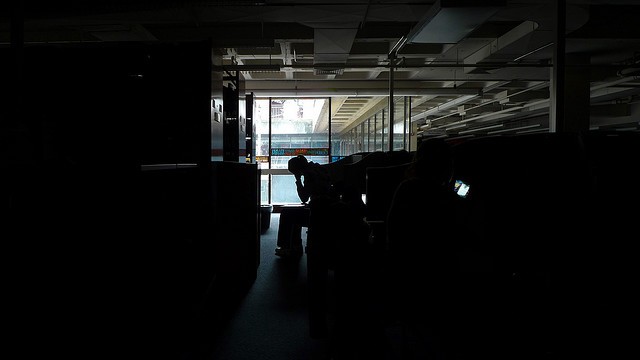
Much like rejection, the possibility of failure will be something that you have to expect. There is no way of avoiding this, and being able to handle this properly is essential. Something you are working on may have bug issues you’ve never experienced before, the client may request something that is close to unfamiliar territory and you can’t figure it out as expected, miscommunication can lead to a misunderstanding, or whatever other reason for a failed project.
The fact still remains that it’s a failure, nothing can change that. The ability to accept, move on, and grow from these situations, is the foundation for freelancing.
4. Time Management Skills

Doing anything well is all about properly managing your time. There are many stories any freelancer can tell you about staying up working night and day for long periods of time. So much so that it is a stereotype of freelance life. However, this is nowhere near the right way to mange your time as a freelancer. Being able to properly mange time, and when and how much to allocate to tasks, is an essential quality.
5. Comfortable Talking with People
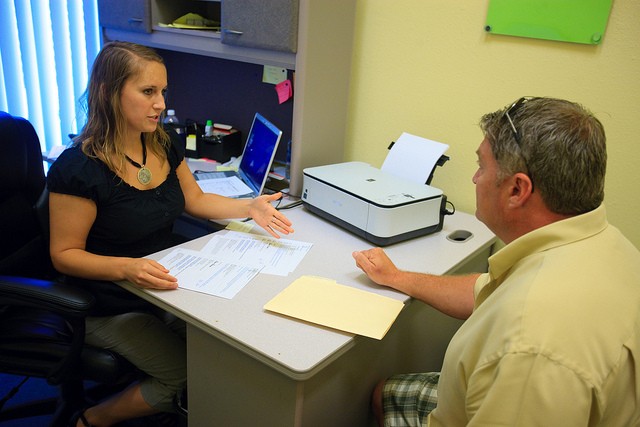
It is talent that first gains anyone attention, but it is the way you communicate to others (in person, phone, or online) that will take you to the next level. There are many freelancers out there that don’t know how to properly communicate, and because of that, pay the price by missing out on opportunities.
In life it is never really so much what is said, more so HOW someone chooses to say what is being said.
6. Your Financial Situation
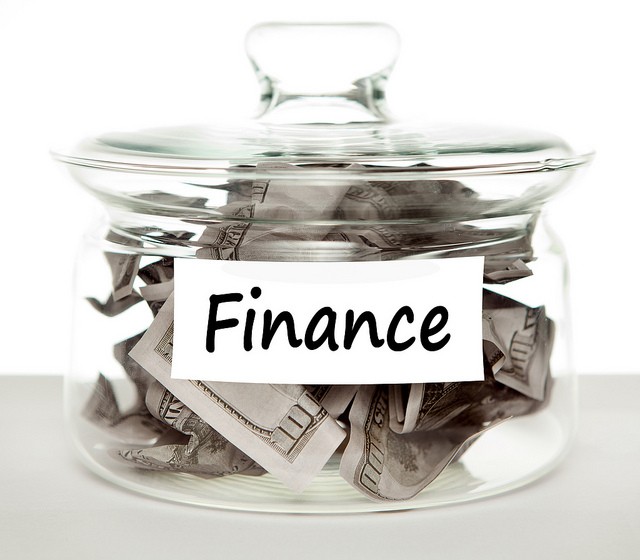
The money associated with freelancing is quite different than what those on the other end of employment get. In corporate, or agency positions there is a steady amount of expected income and bonuses. In freelancing, the income received completely varies by the amount of billable work done.
Having a good grasp of your fiscal history, and how much debt you may or may not be in, is something that needs to be assessed before leaving that 9 to 5. Of course many freelancers offset the irregularity of client work by developing themes, designing premium resources, blogging, writing books, and other things of this nature. However, this still may not be enough depending on the situation.
7. Your Network
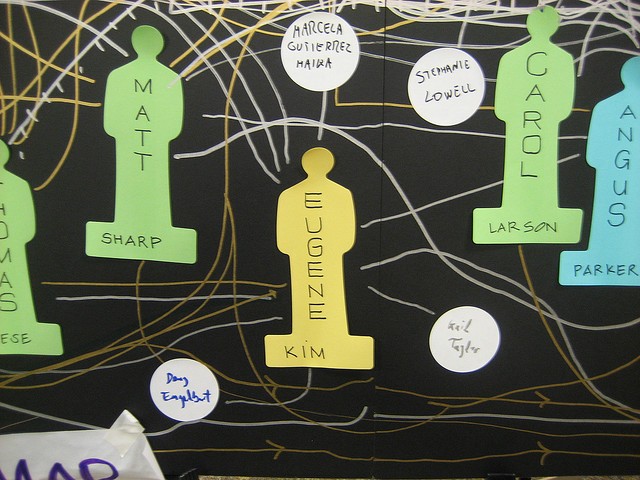 w
w
If you put a shark in a pond with only one or two other fish in it, the shark will die rather fast. However if that same shark is put into an ocean with a countless number of other fish in it, the shark will live a LOT longer. This may be a somewhat cruel analogy, but it gets the point across. To be a successful freelancer, the network you’re in must be big enough to accommodate the desired amount of growth you’d like to see as a freelancer.
8. The Possibility of Outsourcing
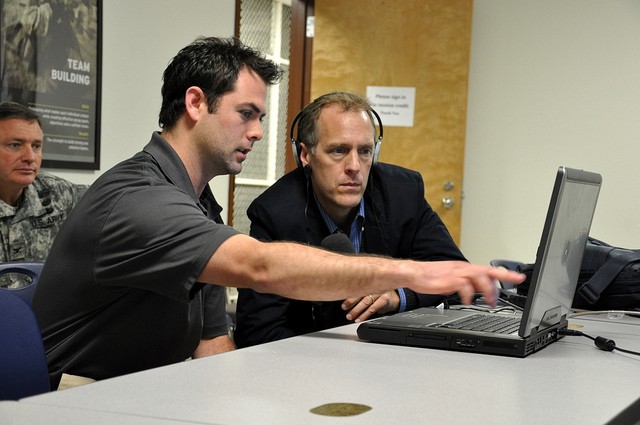
Do you have all the skills to handle the jobs that come your way? Do you have the time to handle the excess amount of leads coming into your inbox? For many freelancers outsourcing their work is out of the question, however it is always better to hire someone else if there are circumstances preventing from personally completing the work.
9. A Marketing Strategy
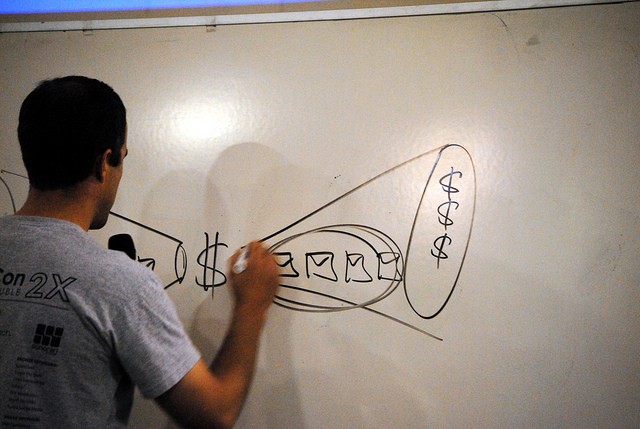
Getting the word out about your new freelance business can take many different routes. There are tools like the internet, traditional marketing tools (business cards, flyers, posters, etc.), word of mouth, and many more. It is important to create a plan of action to see how using these routes for your business can be maximized to bring in a steady stream of client work.
10. Do You Have Everything You Need?
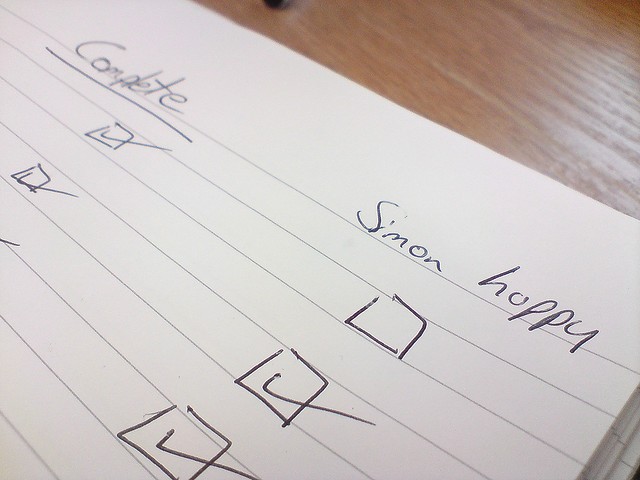
There are a lot of things needed to be a modern day freelancer, mostly in terms of technology. There are computers, software, office/work space, office/work space furniture, and the list can keep on going IF there is not a detailed outlook of what your needs are. The problem that a lot of freelancers face here is that they don’t plan ahead well enough, or they just assume with their computer setup and the ingenuity they posses will be enough.
Wouldn’t that make life a whole lot easier? Too bad things aren’t that simple. There is a lot of purchases that need to be made, and a budget in place for them as well or you’ll be too deep in the whole to actually start out as a freelancer.
Wrap up!
Being a freelancer takes a lot of thought and planning before actually diving in, even more so if you have a family that is dependent on your income for survival. If the only thoughts about freelancing life you have are it being easier than working somewhere else, or the better money, or the relief of not having a supervisor breathing down your neck, then a rethink is needed. This is a drastic change in lifestyle, both professionally and personally.
The responsibility for one’s career is on that very person, and how far it actually will go depends on how knowledgeable and prepared one is.
Any other things aspiring freelancers should think of before beginning? Do share your thoughts.
Now we are getting to the part that the ones that are still passionate about being a freelancer were waiting for. From now on we talk about how to be better. We are going to talk about efficiency.
10 Ways to Become a More Productive Freelancer
As a freelancer, you become your own task master. This means you’re not only responsible for making sure you complete tasks, but just as importantly you need to determine which tasks are to be performed in the first place. For people who lack motivation and/or self-discipline, this can present a big problem. Combined with the numerous distractions a freelancer faces e.g. family/friends, favorite TV shows, temptation to sleep til lunch; you have a formula for incredible inefficiency. In this section we’ll look at the benefits of being more efficient and then some road tested ways of dramatically improving your efficiency.
Good reasons for being more efficient
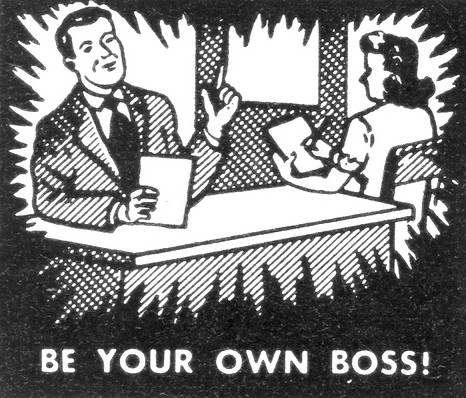
Establishing motivation is an important first step for any process. So before we delve into ‘how’ to become more efficient as a freelancer, lets look at ‘why’ you should become more efficient.
Take the fear out of deadlines: No doubt you’ve gained a few gray hairs and pulled numerous all-nighter’s in the process of meeting deadlines. Building efficiency will help better utilize time, meaning you can maintain your healthy head of hair and significantly reduce your red bull/coffee intake.
More profitable client base: Improving your efficiency will help make your client base more profitable in two ways. Firstly, you’ll learn to focus more time and energy into the clients that provide most value to you. Secondly, by shifting your attention to higher value clients you’ll create more time to take on more of the work that delivers higher value, and stop wasting it on clients who demand a lot and return little.
Stress reduction: As you become more efficient at what you do, you’ll feel more empowered with what you’re doing, and consequently your stress levels will drop considerably.
More time for the good stuff: You started out freelancing with dreams of being able to spend more time with your family/friends and enjoying your favourite activities right? Then your days got crammed with a million and one tasks and you don’t even know what you’re doing. Building efficiency will help get you back on track to finding your original dream.
Happier you, happier clients: As you take control of your days and start feeling a genuine sense of progress your overall happiness and satisfaction will lift immeasurably. A spin-off effect of this is that your creativity and work quality will also improve, which will lead to much happier clients.
Sound good? Of course it does. So the big question, how to do it?
1. Have goals

Goals are essential for staying motivated. They’ll give you a reason to get out of bed in the morning (and not the afternoon), and they’ll help guide you in setting tasks for yourself. So what goals should you set? There are two main kinds, financial and lifestyle. A lot of people put financial first, however if happiness and satisfaction are important to you, I’d recommend starting with lifestyle. Think about what you want your lifestyle to include: how much free time you’ll have, the material items you’ll have, when you want to retire etc. Once you’ve got that figured out, figure out what you’ll need to achieve on the financial side to meet your lifestyle goals.
2. Scheduling
Effective scheduling is critical for freelancers to maintain efficiency. Even if you entered the freelancing field to getaway from the day-to-day grind and routine of employed work, don’t feel like scheduling is the enemy. By allotting specific amounts of time to certain tasks each day, you’ll find that you complete them much more efficiently than if you were to cruise through the day completing tasks ad hoc.
3. To-do list
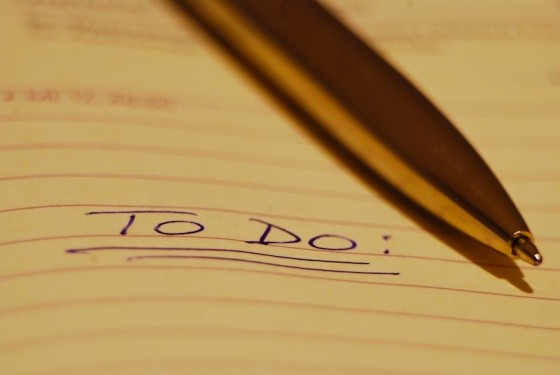
A technique which I find works particularly well and know has worked well for many others is creating a list of to-do list the night before. Before you go to bed, list down the six most important things you need to do the next day and order them by importance. This will get your mind working sub-consciously the night before and you’ll be focused as soon as you wake up. Get to work on the first item on your list and stick with it until it’s completed or until you can’t work on it anymore, only then move on to the next item. Don’t stress if you don’t get all six done, because if you can’t complete them following this method you wouldn’t have been able to in any other way. Completing tasks this way will allow you to focus on one thing at a time which is much more powerful than trying to multi-task.
4. Take yourself seriously
Just because you have the opportunity to work in your pj’s with a bowl of fruit loops in front of you doesn’t mean your job is any less important than one which requires you to suit up and eat sushi at lunch. By taking the mindset that your role is somehow less important than others you’ll only sabotage your own productivity and be more inclined to procrastinate, hence reducing efficiency.
5. Refresh
Take some timeout, both long and short:
- Short breaks – Utilizing short breaks hourly will not only help you stay fresh and motivated, it can have considerable health benefits.
- Long breaks – While you might feel like you need to be on the ball every day of the week, most people find they get more out of a 5 or 6 day working week with a rest day to help rejuvenate in between.
- Vacations – Organizing a getaway for a week or so every few months is not only a great way to recharge your batteries, it will help inspire new ideas.
6. How have other people done it?
There’s a strong chance that someone has already blazed the trail you’re following. Look at how people in a similar role to yours have done things and learn from them. It’s not copying and it’s not being unoriginal – it’s being smart. If you can learn from the mistakes that other people have made then it saves you the time and cost of making them yourself.
7. Pareto’s law – 80% of success from 20% of effort
A trap many freelancers fall into is spending a bunch of time on tasks that deliver no value to them. These time drainers can come in many forms: marketing efforts, crappy clients who pay little and demand too much, doing things yourself that would be better outsourced. The key is identifying the tasks that deliver most value to you and focusing on these. The time wasters can be hard to let go of (it’s a bit like throwing away junk from the cupboard) but you’ll be much happier once you do, and have more time to focus on the things that deliver value, monetarily and in satisfaction.
8. Analyze how you spend a day
Dedicate a day where every 15 minutes you write down what you’re doing. It might sound like a real pain in the butt, but it can be quite amazing (and disturbing) to see how much time you waste on trivial tasks and procrastination. Performing an honest evaluation of how you spend your time will allow you to cut out a lot of the things that are wasting your time.
9. Consider power naps
Many people associate napping during the day with laziness – however a short power nap during the day can have amazing positive effects on your productivity. By using the correct power napping techniques you’ll gain a lot more than you would from pounding coffees and red bulls all day.
Conclusion
These tips aren’t hard and fast. Everyone is different and will require a different system to achieve maximum efficiency. The best thing you can do is to commit to testing out these techniques consistently over the next few weeks and seeing how they work for you. The key is to take note of results and be honest with yourself about what is and isn’t working. If you can do this you’ll be able to come up with a customized system that will have you delivering maniac levels of productivity in no time.
How have you increased your efficiency as a freelancer?
If you read this section, you have to read the next. Brent Weaver is going to talk about how to add value to you and your work as a freelancer.
How to Become a Valuable Web Designer
Learn How to Become a Valuable Web Designer from Brent Weaver
How do you add value to yourself as a web designer?
Even at the early stages of web design, the debate how much a web designer should charge their clients has been raging.
The competition has always been a race to the bottom, whoever charges cheaper, wins the project. It gave negative repercussions to web design professionals where you get swamped by projects, while struggling to make ends meet.
It’s a terrible paradox, a cycle that continues until one loses their passion for design.The situation looks dire for web designers.
There’s good news! You can change this terrible cycle, reclaim the passion you have, and earn according to the value you bring to the table. Brent Weaver, of Ugurus and the 10K Bootcamp, returns once again to share how to become a valuable web designer.
Looking Beyond the Matrix
Web designers, according to Brent Weaver, can be categorized into four:
- High Pay + Low Value = These are the scammers, swindlers, and fly-by-nighters, who charge very but do not deliver what they’ve been paid for.
- Low Pay + Low Value = These category is where most web professionals fall. They focus on giving the services, like design, e-Commerce integration, responsive layout, etc.
- Low Pay + High Value = Some web professionals fall under this category. They deliver great work, but they don’t know the business side of web design, nor the value they deliver on the table.
- High Pay + High Value = This category belongs to those who are well-paid and well-respected in the industry. This is what web design professionals should aim for.
The last category, High Pay + High Value, seems like very difficult to achieve if you look at it. You might think that this category only belongs to the experts, the gifted, and the lucky. However, you must remember that those who are in this category once belonged to the first three category.
But what made them level-up from struggling web design professionals to well-respected experts in the industry with high earnings? The secret, according to Brent Weaver, is in how you position yourself.
Value versus Service
A lot of us are already familiar with this scenario: A client is looking for a web design professional to create a website for his business. Two designers came in and offered the same services, but one designer charged $500 while the other charged $50,000. Obviously, the client will get the one who charged cheaper.
What’s wrong with this scenario?
Both providers offered the exact, same services – the same mistake a lot of web designers make.
When you just focus on the services you can do to the client, you will never stand out because because everybody can do what you can. You are not offering something unique into the table, and the race to the bottom begins.
Instead on focusing on what you can offer, learn to listen and understand what your client needs. What problems and challenges does he face? Identify them by carefully listening to him, and offer a solution.
When you begin to focus on the needs of the client and provides a solution for them, it becomes easier to make your pitch. Why? Any person is happy when he finds a solution to his problem. Any person is happy if someone can help him make that problem go away.
Conclusion
That is the difference between the High Pay + High Value web designers from the rest. They know how to listen and take time to understand their clients; then, they proceed to create a solution. It’s both a win-win situation, and you walk away with a fat check and a satisfied feeling knowing you were able to help one more client.
Watch the video to hear more how to become a valuable web designer, and don’t forget to share and spread the love.
Now we are getting somewhere, the next section will be about the business tips for web designers and how to be the best you can be. Let’s roll.
Best Business Tips on How to Become a Great Web Designer
Learn How to Become a Great Designer from Jairek Robbins
What are the best business tips how to become a great web designer?
I think you’ll agree with us when we say:
It is always a challenge for web designers to find the right methods and strategies how to increase their performance so they can generate more income.
Is it, really?
The good news is, there really are proven tips that will give you an edge how to be a successful web developer and to become one of the leaders in the industry. They are actually not new, but oftentimes overlooked wisdom because they sound and look simple.
In this video interview, Jairek Robbins shares more than just his two cents, but a whole lot of wisdom that will make you a better web designer. You can take all the tips and apply them one at a time in your life or career as a website designer. And in so doing, you will be able to increase your value and naturally expand your client base. So let’s look at each of them.
1. Always find something to learn from people.
[ctt title=”People can either be a great source of inspiration or warning. ~ Jairek Robbins” tweet=”People can either be a great source of inspiration or warning. ~ Jairek Robbins” coverup=”4f4d2″]
To become a successful web designer, you need to accept the fact that there’s always something you can learn from people, whether from their successes or from their mistakes.
2. Have an accurate view how to build a really solid foundation.
[ctt title=”Invest enough time to build a proper foundation where you can launch your project from. ~ Jairek Robbins” tweet=”Invest enough time to build a proper foundation where you can launch your project from. ~ Jairek Robbins” coverup=”s53RN”]
Good money will not come in just because you created a nice blog, a website, or a logo. Rather, your success hugely depends on how big your community and platform are as well as the amount of time you invested to bring so much value to people that they trust you enough to learn more from you.
3. Be willing to give your gift to the world no matter what it takes.
[ctt title=”If you want to be successful as much as you want to breathe, then you will be successful. ~ Eric Thomas” tweet=”If you want to be successful as much as you want to breathe, then you will be successful. ~ Eric Thomas” coverup=”ffPee”]
Identify what the core talent or gift you want to share with the world and be willing to share it anytime, anywhere that you begin to generate a lot of value from it as well as generate desire for people to start wanting what you have to offer them.
4. Be willing to earn your way to the top.
[ctt title=”Instead of demanding more of the world, demand more of yourself. ~ Jairek Robbins” tweet=”Instead of demanding more of the world, demand more of yourself. ~ Jairek Robbins” coverup=”16a2v”]
A lot of marketers and sales people often teach that you need to set a high price in order to find better customers. The reality, however, is you’re not even booked for a project that costs $800 so why demand a $25,000 rate. You have to be willing to start at the bottom and bring value in what you do until people start noticing what you can deliver. Then, you can increase your rate because that’s the only way to go.
5. Just show up and serve.
[ctt title=”Over-deliver so many times so that people become raving fans. ~ Jairek Robbins” tweet=”Over-deliver so many times so that people become raving fans. ~ Jairek Robbins” coverup=”sk9o7″]
Show up and serve people. Show up and serve even if they don’t have anything to pay you, but they have the audience and the platform to get your message across. Be willing to deliver again and again.
Give them what they need. Give them what they want. Give them even what they don’t know they need. Do it so well that they begin to brag you to every person they meet. That will make your business grow and expand naturally no matter what industry you are in.
Conclusion
Becoming a great web designer and getting into the place where good money is, requires an investment of your time, money, and effort. You need to have the drive to learn new skills and new tools to make yourself better and better, which adds to your value. When you add value, you also begin to create a brand and a name for yourself as well as increasing your skills and the ability to serve.
And the end result of it?
Your worth increases as well as your confidence because you have the evidence to back the claim of being a great web designer.
Now that you know all of these things, you now you can travel around the world and earn money on the way. Let’s take a look at that.
How to Travel the World as a Freelance Web Designer or Web Developer
You have probably heard about those people who travel the world for years on end. You know who I’m talking about – they live in places like Thailand, work from the beach, and make everyone envious with their never ending stream of fascinating stories and amazing pictures. Now, what if I told you, that you, a freelance web designer or web developer, can live a life like that?
Well, guess what – you can.
Advantages and Disadvantages of Being a Digital Nomad

Let’s keep it real – there are both advantages and disadvantages to this kind of lifestyle. As a freelancer, you already have the flexibility to work from home in your PJs and set your own hours, so I won’t discuss those blessings here.
The question is what would being a digital nomad add to the mix?
The main advantage of being a digital nomad is travelling. It allows you to save money by moving to a cheaper place, see the world by living in different locations, and meet fascinating people by attending meet-ups and conferences all around the globe. And, of course, there’s also the opportunity to avoid cold winters.
What’s not to like, right? Well…
The main disadvantage of being a digital nomad is loneliness. It’s hard to build meaningful relationships when you are changing locations all the time.
Of course, if you stay in one place long enough, you will probably make some friends, but that makes moving again even more difficult.
Eventually, you end up with plenty of friends all over the world that you keep in touch via Internet, but you rarely have close friends nearby that you can meet up with offline.
And yes, it seems that most digital nomads are single, since this lifestyle makes it hard to have long-term romantic relationships.
Here’s some food for thought on this issue (which, in my opinion, is not discussed nearly enough in the lifestyle design corner of the blogosphere): Why Working as a Digital Nomad Is Not for Me.
I’d say that although digital nomad lifestyle is indeed awesome, it’s not as glamorous as it may seem when you read all those travel and lifestyle design blogs.
You have to see it for what it is and understand what it is not – it is an amazing opportunity to see the world, but it is not a magic cure for all your personal issues.
Remember, wherever you go, there you are, even if it’s under a palm tree. That doesn’t make palm trees any less awesome, though.
How Much Does It Cost to be a Digital Nomad?

Many people think that only trust fund kids can afford to live a nomadic lifestyle.
That’s simply not true – you can significantly reduce your costs and increase your savings by moving to a country where the cost of living is lower.
How much money do you need to pull this whole digital nomad thing off?
Well, the truth is that I can’t tell you much without knowing your plans, but here’s a (very) rough estimate:
- $1,000/month. You can easily get by on this amount in most places – it will allow you to have a moderate lifestyle in the more expensive countries and a decent lifestyle in less expensive countries.
- $2,000/month. This amount of money will allow you to have a decent lifestyle more expensive countries and an affluent lifestyle in less expensive ones.
- $3,000/month. This amount of money will allow you to have a very decent lifestyle in the more expensive countries and a very affluent lifestyle in less expensive ones.
By the way, by moderate, I mean living with roommates, cooking your own meals, and rarely going out.
By decent, I mean having your own apartment, eating out few times a week, and going out on weekends.
By affluent, I mean having your own posh apartment, eating out whenever you want, and partying like crazy.
I’d say avoid staying in most expensive cities in the world (New York, London, Moscow, etc.) and you will be just fine with 1k-3k/month!
Also, here are two articles in which a digital nomad couple shares the details of their budget of the last 4 years:
- The Cost of Digital Nomad Living: Our 3.5 Years Budget
- The Cost of Digital Nomad Living: Our Year 4 Budget
Of course, this is a budget of a couple, so things will be quite different for you if you travel alone or as a family with a kid. Nevertheless, it can give you a glimpse into the financial aspect of this lifestyle.
As a freelance designer you should have some online clients you can work with no matter where you are. If you don’t have them yet, read this article and hopefully it will help you get some online work.
5 Steps to Becoming a Digital Nomad

Moving abroad may sound scary but it really isn’t all that complicated. You see, normally the main issue people have when moving abroad is finding work there, but this isn’t a concern for you if you are already making money as a freelance web designer or web developer.
This means that moving to another country is a pretty straightforward affair for you…
Step #1: Make sure you have an emergency fund!
Having enough money is one of the most important things that you can do to ensure your safety abroad.
What qualifies as emergencies?
- Getting sick and needing medical attention
- Not getting any freelance work for a while.
- Flying back home to visit your ill grandma.
- Having your laptop stolen.
- And other similar situations.
You need to be prepared for situations like that since you never know what exactly will go wrong, but you can be damn sure that something will.
Step #2: Pick your destination
Where should you go?
My advice is to pick a country where you can live comfortably on your current income and put some money into savings account every month.
I suggest you to consider going to either Central America, South America, or South East Asia, since living costs are low there.
Keep in mind that staying in countries where cost of living is low will also provide you with plenty of opportunities to travel in that country and/or in the neighboring countries.
Take a look at the article The Top 10 Lifestyle Design Cities 2014 Edition from Tropical MBA if you want some ideas on where to.
Step #3: Put your affairs in order
You want to make sure that you tie any loose ends before you move to another country.
This may mean renting out your house, selling your car, selling your stuff, informing your bank that you are moving, and so on. You will have much more peace of mind if you put your affairs in order before you leave.
Step #4: Prepare for your trip
Here are some things that you need to do in order to prepare for your trip:
- Do your research. Buy a guidebook for that country, read online articles, ask questions in forums, and so on. Learn about the living costs, culture, religion, political situation, etc. You want to make sure that you know what you are getting yourself into.
- Get travel insurance. Once again, you never know what will go wrong, but you can be pretty damn sure that something will. Travel insurance will come in handy if your flights are canceled, or if your laptop is stolen, or if you get sick. Never travel without it.
- Get a visa. You don’t want to show up in a foreign country without proper documents. Make sure that you get the right visa before you go unless you can get one on arrival. Also, don’t put this off until the last minute because it can take you months to get visas to certain countries.
- Get vaccines. You need vaccines when travelling to most developing countries and even to some developed ones. Find out what exactly you need and get it done.
- Get equipment. You may want to get yourself a decent backpack, laptop, camera, etc. if you don’t have these things yet. I suggest not to skimp on stuff you will use every day because it will affect your quality of life a lot.
- Get random things you may need. There are all kinds of random things you may need to buy before you leave.For example, from what I hear, tall men may have a hard time finding fitting clothes in South East Asia. Do your research to find out what things that you need are hard to find in the country you are going.
- Book your flight. In general, the earlier you book, the better. Book your flight as soon as you know where you are going and have your visa request approved.
Use SkyScanner as a baseline, then compare the results to other flight aggregator websites:
- Kayak
- Momondo
Compare the cheapest price to the one that is listed on the airline’s website, then buy. Also, try to be flexible with your flight dates and avoid flying during weekends and festivities.
Book your accommodation. I recommend you to book a room or an AirBnB apartment in your destination for a week or so – this way you won’t have to run around looking for a place to stay right after you land.
Why only a week?
If you are planning to stay in that place for 3-6 months you will be able to rent a room or a flat for that time for a much less than you’d pay if you’d stay in hostels or AirBnB apartments all the time.
Step #5: Go to your destination
I know, I know, it’s obvious. However, leaving your hometown behind and moving to another country can be scary, so make sure that you don’t back out in the last moment. Take the leap!
Step #6: Settle in.
Once you are in your destination it’s time to settle in:
- Make sure you know what to do in the case of emergency. You know how to call the ambulance, police, firefighters, etc. in your country, right?Once you move to another country you should immediately learn how to do that as well. This is something that most people forget to do and then regret it if they ever find themselves in trouble.
- Find accommodation. You need to find a decent place to stay. I’d say that hostels and AirBnB works best for stays that are less than a month meanwhile renting a room in a flatshare or renting an apartment (not via AirBnB but through local ads) works best for stays longer than a month. By the way, staying outside the city centre will almost always save you quite a bit of money.
- Set up the things you need. There are a lot of things you probably didn’t think about much while living in your hometown that you need to set up all over again when you move abroad. This may include getting local SIM card, gym memberships, etc.
- Explore the area and find the best places. You know how in your hometown you have your favorite places?It’s time to go on the lookout for best parks,cafes, restaurants, bars, clubs, etc. It makes sense to take time to find the places if you are going to stay somewhere for a while!
- Make friends. When you live in your hometown for your entire life you often don’t realize how much of built-in social connections you have. I mean, there are your kinder-garden friends, and your high school friends, and your uni friends, and the people you worked with, and of course your family and extended family, etc.Guess what? All of that is gone once you move to another country. You have to build your social life from scratch.I suggest you to do that by going to meet-ups, joining expat Facebook groups and forums, and engaging in some sort of group activities (martial arts classes, hiking club, etc.).
That’s about it when it comes to moving to another country as a digital nomad. You may think that it can’t be that simple, but it actually is, as long as you have all the documents sorted and enough money coming in every month. Will you encounter some unexpected obstacles? Sure. But I doubt it will be anything you can’t handle.
Frequently Asked Questions

“I’m not sure if this is safe!”
The world is a dangerous place but it’s probably not as dangerous as you think. You can always research things like prejudice, crimes rates, political situation, etc. before going somewhere. Many places around the world are just as safe as your hometown.
“I can’t go because I have a mortgage/credit card debt/car payments/etc.”
I’d say that if you are under water financially then moving to a less expensive country will help you to improve the situation faster. Think about it: if you live in USA on, say $2,000/month, and then move to Thailand and live on $500/month, you suddenly have an extra $1,500/month that you can use to pay off your debts faster. And as for things like houses and cars that supposedly tie you down to one location, I’d like to remind you that you can simply rent out the house and sell your cars.
“This may work for single people in their 20s, but what if I have a family?”
I will admit that I wrote this article with the young and single demographic in mind. However, that doesn’t change much since most of the advice still applies even if you have a family. There are plenty of nomadic families out there – just take a look here, here, and here.
“This may work for people from developed countries who have it easy when it comes to visas, but what if I’m from India/Bangladesh/Malaysia/etc.?”
It’s definitely harder to travel when you are from a developing country because visa requirements are much stricter. However, people still manage to pull it off, just take a look at this Indian couple or this guy from the Philippines.
Also, keep in mind that although getting into places like EU, US, Canada, Australia and New Zealand may be tough, you can probably get visas to most developing countries without much hassle.
“This may work for guys, but I’m a single female, can I do this as well?”
Of course there are plenty of nomadic ladies out there! Honestly, I think that travelling as a single female is much less dangerous than people make it out to be.
Once again, many places around the world are just as safe as your hometown (if not safer), so there’s no need to be afraid of living abroad on your own.
Avoid dangerous places (and by dangerous I don’t mean developing countries, I mean countries that are extremely prejudiced against women, torn by war, or suffering under a dictatorship) , keep your eyes open, and use your common sense, and you will be just fine.
Should you become a digital nomad?

Well, no one can answer that for you since you are the one who knows yourself best.
That being said, I think that if you are a freelance web designer or web developer and you are interested in this whole digital nomad thing, then you should probably go ahead and give it a try – you can always go back to your hometown if things don’t work out, right?
Maybe you’ll love it, maybe you’ll hate it, but you’ll definitely end up with some stories worth sharing with your grandkids!
Conclusion
We have com to an end of this ultimate guide to freelancing. If you were with us until the end I assume, that you already are freelancing of have decided to be one. Hopefully these tips and tutorials will help you on your way on becoming better at what you do. If you want more about this subject, please read article How to become a freelancer. What are your thoughts about this subject? Tell us in the comment section.
This post may contain affiliate links. See our disclosure about affiliate links here.

